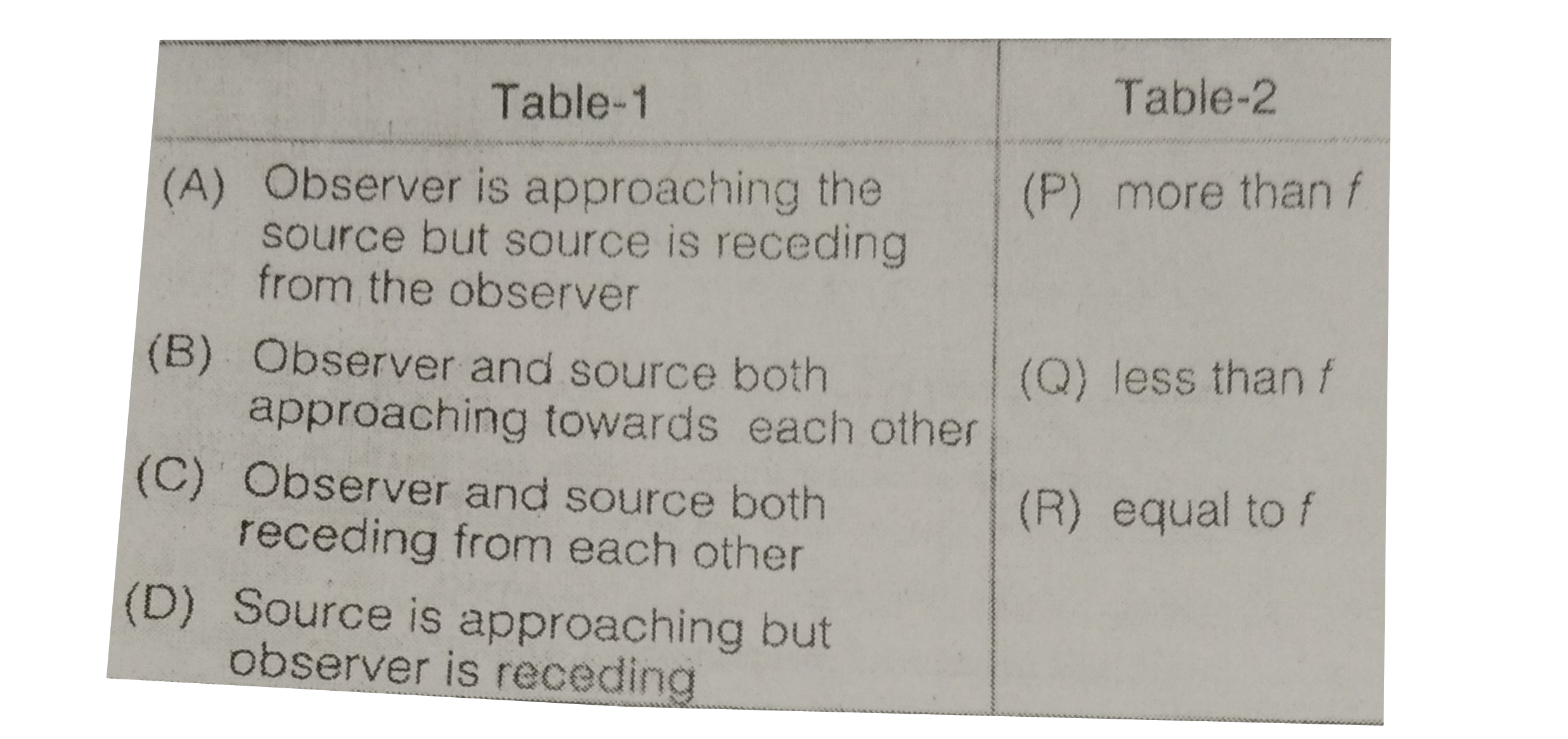A source is approaching towards an observer with constant speed along the line joining them. After crossing the observer, source recedes from observer with same speed. Let f is apparent frequency heard by observer. Then,
f will keep on increasing during approaching
f will keep on decreasing during receding
f will remain constant during apporaching
f will remain constant during receding
The correct Answer is:C, D
During approach,
f=fo(νν−νs)
>fo but f is constant.
During receding.
f=fo(νν−νs)
<fo but f is again constant.
Topper's Solved these Questions
- SOUND WAVESBOOK - DC PANDEYCHAPTER - SOUND WAVESEXERCISE - More than One Correct Options
1 Videos
- SOUND WAVESBOOK - DC PANDEYCHAPTER - SOUND WAVESEXERCISE - Level 2 Comprehension Based
1 Videos
- SOUND WAVESBOOK - DC PANDEYCHAPTER - SOUND WAVESEXERCISE - Single correct option
1 Videos
- SOLVD PAPERS 2017 NEET, AIIMS & JIPMERBOOK - DC PANDEYCHAPTER - SOLVD PAPERS 2017 NEET, AIIMS & JIPMEREXERCISE - Solved paper 2018(JIPMER)
38 Videos
- SUPERPOSITION OF WAVESBOOK - DC PANDEYCHAPTER - SUPERPOSITION OF WAVESEXERCISE - Level 2 Subjective
8 Videos
Similar Questions
A sound source has frequency f. Source and observer both have same speed.For the apparent frequency observed by observer match the following.

View SolutionA source of sound emitting a note of frequency 200 Hz moves towards an observer with a velocity v equal to the velocity of sound. If the observer also moves away from the source with the same velocity v, the apparent frequency heard by the observer is
View Solution
Knowledge Check
An observer moves with a constant speed along the line joining two stationary objects. He will observe that the two objects
Ahave the same speedBhave the same velocityCmove in the same directionDmove in opposite directionsA source is moving towards an observer with a speed of 20 m / s and having frequency of 240 Hz . The observer is now moving towards the source with a speed of 20 m / s . Apparent frequency heard by observer, if velocity of sound is 340 m / s , is
A240 HzB270 HsC280 HzD360 HzThe frequency changes by 10% as the source approaches a stationary observer with constant speed vS, What sould be the percentage change in ferquency as the source recedes from the observer with the same speed? Given that vS<<v (v speed of sound in air).
A14.3%B20%C16.7%D10%
If the source is moving away from the observer, then the apparent frequency …………..
View SolutionA source is approaching a stationary observer with uniform acceleration . The frequency of the sound heard by the observer appears to -
View SolutionConsider the droppler effect in two cases. In the first case an observer moves towards a stationary sound-source, with a speed V1. In the second case, the observer is at rest, and the source moves towards the observer with the same speed V1. Then the frequency heard by the observer
View SolutionAssertion : A sound source is approaching towards a stationary observer along the tine joining them. Then , apparent frequency to the observer will go on increasing.
Reason : If there is no relative motion between source and observer , apparent frequency is equal to the actual frequency.
View SolutionThe frequency changes by 10 % as the source approaches a stationary observer with constant speed vs. What would be the percentage change in frequency as the sources recedes the observer with the same speed ? Given , that vs<<v(v= speed pf sound in air )
View Solution
